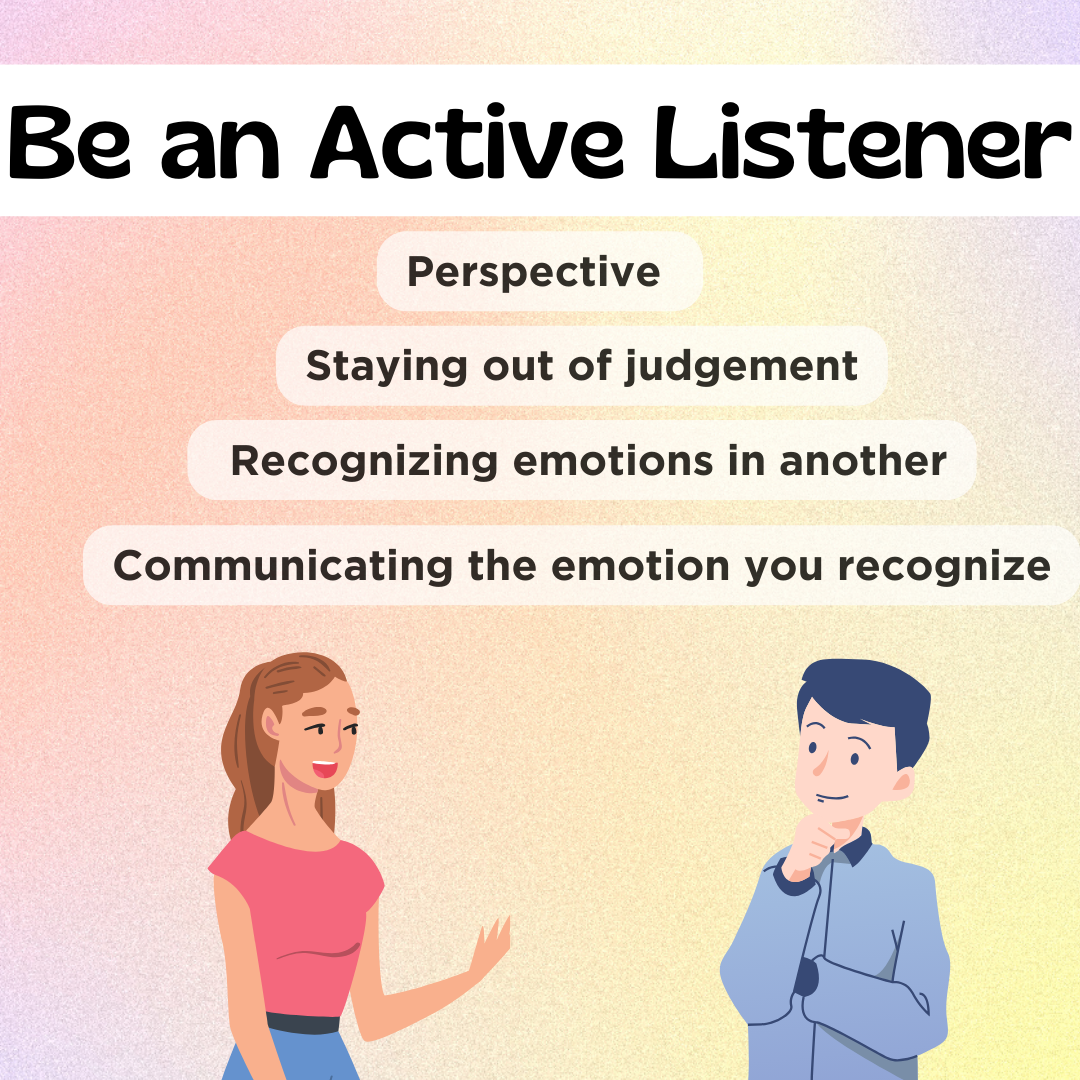 Remember that Active Listening Thing? Do that!
Remember that Active Listening Thing? Do that!
How do you recognize when someone is experiencing a defensive response? Do you notice redness in the other person’s cheeks? Do you see lines of tension in their body language? Do you notice that the other person lashes out or withdraws from the interaction?
When someone reacts defensively, most of us respond defensively.
It takes a lot of self-awareness and self-management to productively respond to someone’s defensive response. The most productive way to help someone’s brain reengage fully during a defensive response is to listen to them. Below is a listening framework to help you consider how to help someone calm down and get their brain ready to start working on a solution to the conflict at hand.
Using your EARS to help someone’s brain reengage.
Empathy – Watch the video below. She does a wonderful job to help us understand the difference between empathy and sympathy and the four elements of empathy:
1) Perspective Taking: Taking the perspective of another
2) Staying out of judgement
3) Recognizing emotions in another
4) Communicating the emotion you recognize.
Brown, B. (2014). Brené Brown on Empathy. RSA. Retrieved from https://www.youtube.com/watch?v=1Evwgu369Jw
Attention – The easiest act of empathy is to pay attention to someone. You can not be empathetic with someone if you are distracted and not paying attention to them. Be present and give the person the time and space to share their story or experience.
Reflection – Reflection is another act of empathy. Reflection is accomplished by communicating the feelings, thoughts, and experience that you recognize in the other person. A reflection is as simple as “I can see that you are really excited” or “I’m not sure what that is like, but I’m just really glad you shared that with me.”
Summary – Stating a summary is simply a longer version of reflection. This is done to ensure sure that you fully understand someone’s story and experience. Reflection and summary is the key to minimizing miscommunication and making sure that you truly understand someone else’s experience. Reflection and Summary also validates someone’s experience. This action helps the person feel heard.
Slow Down the Process
Sometimes, you need to “go slow to go fast”. When someone is having a defensive response, they are incapable of having a productive conversation to solve or manage a conflict. Therefore, rushing to solution mode when someone is defensive does not work. It takes time to deescalate and calm a defensive response. Don’t be afraid to take a break when someone else (or even yourself) is experiencing a defensive response. A break can take multiple forms:
- A 5 minute break
- A lunch break
- A day long break
- Even multiple days
Reframe the defensive response
A really interesting form of reflection and validation is reframing someone’s defensive response.
Reframing a defensive response as caring examples:
“I appreciate that you are invested in our relationship. We only react strongly to something if you care.”
“I didn’t realize you cared so much about this issue. What can we do to find a path forward?”

